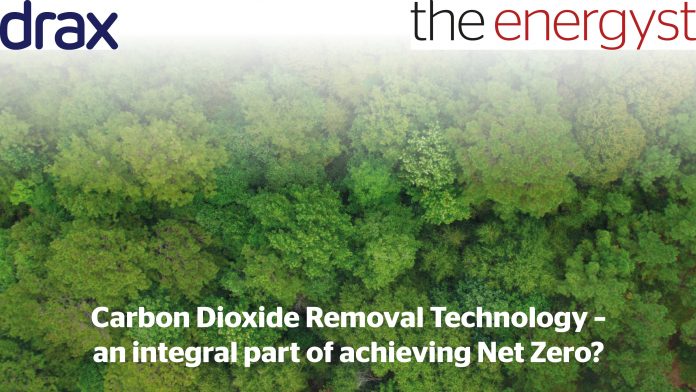We are now on a trajectory where if we are to limit warming to 1.5° Celsius, as per the Paris Agreement, we will need carbon dioxide removals (CDRs) on a gigaton scale. The United Nations Intergovernmental Panel on Climate Change (UN IPCC) estimates the need will be as great as up to six gigatons (billion tonnes) of CDRs from the atmosphere every year by 2050.
This means that it is not only critical that we reduce our emissions, but also that we pair this decarbonisation with the removal of carbon from our atmosphere. CDRs can be used to help neutralise hard to abate emissions from industries, like aviation and construction, that will find it difficult to fully decarbonise, as well as to remove excess historic emissions that already exist in the atmosphere.
They can be delivered through different engineered and nature based solutions, including direct air capture with storage (DACS) and bioenergy with carbon capture and storage (BECCS); and nature-based options such as afforestation and reforestation; and speeding up naturally occurring processes, such as enhanced weathering.
Engineered carbon removal technologies like BECCS are crucial to achieving long-term climate goals.
The Role of BECCS
BECCS is the most scalable of the engineered carbon removal technologies – it can be deployed rapidly, and it is affordable compared with other permanent removal solutions. BECCS is also the only technology that generates reliable, renewable power while removing carbon from the atmosphere.
We are seeing scientific opinion, Governments around the world and industry align on the importance of BECCS in our ability to neutralise emissions and generate renewable reliable power. This has been evidenced by the UN IPCC’s Six Assessment Report and the UK Government’s Biomass Strategy which speak to the role of BECCS in achieving net zero, as well as by the increased investment in carbon removals from BECCS that we are seeing by industry.
Investing in the Future
BECCS technology is ready for industrial scale development, but if we are to realise its potential, investment and standardisation of the market for removals is needed.
“There are sites doing it at a much smaller scale, about 1000 tonnes a year. At Drax we have an ambition to be a global leader in BECCS technology and carbon removals and have set ourselves a target which aligns with the scale of that amibion – we aim to deliver 14 million tonnes of CDRs annually from 2030,” explains Valpy Fitzgerald, Director of Renewables & Sustainable Commodities at Drax.
A strong carbon market will be essential to accelerating the deployment of climate saving technologies like BECCS. Still in its fledgling stages, the current market will need to scale about thirty-fold by 2030 if we are going to see removals at the volume needed to limit warming to 1.5°C.
Businesses and organisations will play a key role in this as they look to achieve their sustainability goals. With CDRs they have an opportunity to rebalance their carbon footprints for good. These early adopters have an important role to play in developing the market and making large-scale, engineered carbon removals a reality.
Establishing standards
Recently, there has been a significant global push for initiatives to support standards and good governance of the CDR market. To build credibility in the market for CDRs from BECCS it is essential that there are robust standards for high integrity carbon credits and governance systems in place. Transparent measurement and reporting will also help ensure that emissions and removals associated with a BECCS project are recognised, irrespective of their location or developer and provide confidence to potential investors.
Drax is pushing for the development and acceptance of globally recognised standards and has pioneered a methodology, alongside Stockholm Exergi and EcoEngineers, to help guide the discourse on CDRs from BECCS.
“We have developed a robust framework for quantifying the net carbon removals from BECCS, and also put in place guardrails to ensure the biomass used for BECCS is sustainably sourced, and any social and environmental benefits are assessed and mitigated,” says Angela Hepworth, Commercial Director at Drax. “This will give buyers the confidence they need to purchase high-integrity Carbon Dioxide Removals from BECCS, and enable projects to be developed”
We need deep emissions cuts across the board, but we also need CDR technologies which provide, safe, permeate and high integrity removals and globally recognised standards for credits that investors can feel confident in. This work is happening today, so that we are ready for tomorrow.
We’re hosting a webinar in association with Drax at 11am on 2nd November where we’ll explore CDR technology in depth. We’ll take look at the results of our recent reader survey and offer valuable insights on energy professionals attitudes to the technology and its potential to help tackle climate change. Click here to register.




